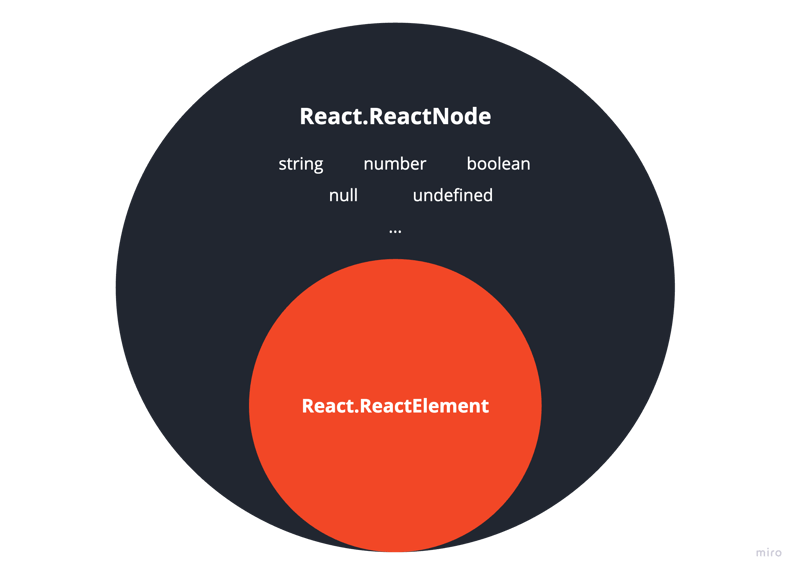React’s type system, when used with TypeScript, provides developers with a robust framework for building type-safe applications. Understanding the nuances between various React types is crucial for making informed decisions about their usage. Let’s dive into a detailed comparison of these types in pairs to understand their differences and appropriate use cases.
1️⃣ React.FC vs React.ElementType
React.FC (React.FunctionComponent)
React.FC is a type specifically used for defining functional components in React. It started to become more popular when React Hooks were introduced and widely adopted.
Prior to React 18, it used to include an implicit children prop, making it suitable for components expected to have children. For a long time, though, the implicit children prop type has been removed according to React 18’s type changes.
Here’s a usage example:
title: string;
children?: React.ReactNode;
}
export const SomeComponent: React.FC<SomeComponentProps> = ({ title, children }) => {
return (
<article>
<h2>{title}</h2>
{children}
</article>
);
};
However, since the removal of the implicit children prop type, much fewer people use React.FC now as it’s clunky and provides no real benefits compared to directly assigning the interface to the props object:
title: string;
children?: React.ReactNode;
}
export const SomeComponent = ({ title, children }: SomeComponentProps) => {
return (
<article>
<h2>{title}</h2>
{children}
</article>
);
};
React.ElementType
React.ElementType, on the other hand, is a broader type that represents any component type that can be rendered by React. This includes not only React functional and class components but also string tags for HTML elements (e.g., ‘div’, ‘span’). React.ElementType is particularly useful when you want to accept a component as a prop and render it, allowing for dynamic component usage.
export const Container = () => (
<DynamicComponent className=“container”>Hello, world!</DynamicComponent>
);
Here, DynamicComponent is typed as React.ElementType, allowing it to be dynamically assigned to different types of components or HTML elements.
Comparison notes
React.FC is mainly for defining functional components. Since React 18, it is not that useful anymore.
React.ElementType offers more flexibility in accepting various kinds of renderable entities. Use React.ElementType when you need something that can dynamically accept different types of React components or HTML elements.
2️⃣ React.ReactNode vs React.ReactElement vs JSX.Element
React.ReactElement
React.ReactElement is an object with type, props, and key properties, created by the React.createElement() function. It’s a more specific type compared to React.ReactNode, representing elements that can be rendered directly by React.
export const Container = () => <>{elementContent}</>;
React.ReactNode
React.ReactNode is the most inclusive type, representing anything that can be rendered by React. This includes primitive types (strings, numbers, booleans), JSX.Elements, React.ReactElements, arrays of these types, and more. It’s the go-to type for props that can accept a wide variety of content, such as children.
<div>
<p>This is a paragraph.</p>
{‘This is a text node.‘}
{null}
</div>
);
const primitiveTypeContent: React.ReactNode = “I’m a primitive-type React.ReactNode“;
export const Container = () => {
return (
<>
{multiElementContent}
{primitiveTypeContent}
</>
);
};
This Venn diagram depicts the relationship between React.ReactNode and React.ReactElement:
JSX.Element
JSX.Element is essentially a React.ReactElement with a broader definition, allowing various libraries to implement JSX in their own way. It’s the type used internally by TypeScript to represent the return type of JSX expressions.
export const Container = () => <>{jsxElement}</>;
Comparison notes
React.ReactNode is the most flexible and inclusive, suitable for typing props like children that can accept diverse content.
React.ReactElement and JSX.Element are more specific, with React.ReactElement being suitable for elements created by React and JSX.Element for elements defined using JSX syntax.
✨ Fun facts
The returned value of a function component a.k.a. the result of the rendering process is always either React.ReactNode or React.ReactElement/JSX.Element. Basically, a function component can be understood as:
Calling the function component just like any regular function gives us the same result as using the JSX syntax, meaning:
return <div>{children}</div>;
};
export const App = () => {
return (
<div>
<MyComponent>
Rendering MyComponent with <strong>JSX Syntax</strong>
</MyComponent>
</div>
);
}
is the same as:
return <div>{children}</div>;
};
export const App = () => {
return (
<div>
{MyComponent({
children: (
<>
Rendering MyComponent with{“ “}
<strong>Function Component Invoking</strong>
</>
),
})}
</div>
);
}
Check out the codesandbox demo below:
Conclusion
Understanding the differences between these React types and interfaces allows developers to make more informed decisions, leading to cleaner, more maintainable code. Whether you’re defining components, accepting dynamic content, or handling children, choosing the right type is crucial for leveraging React and TypeScript’s full potential.
Please look forward to my upcoming articles that dive deeper into the patterns that utilize the understanding of these types.



